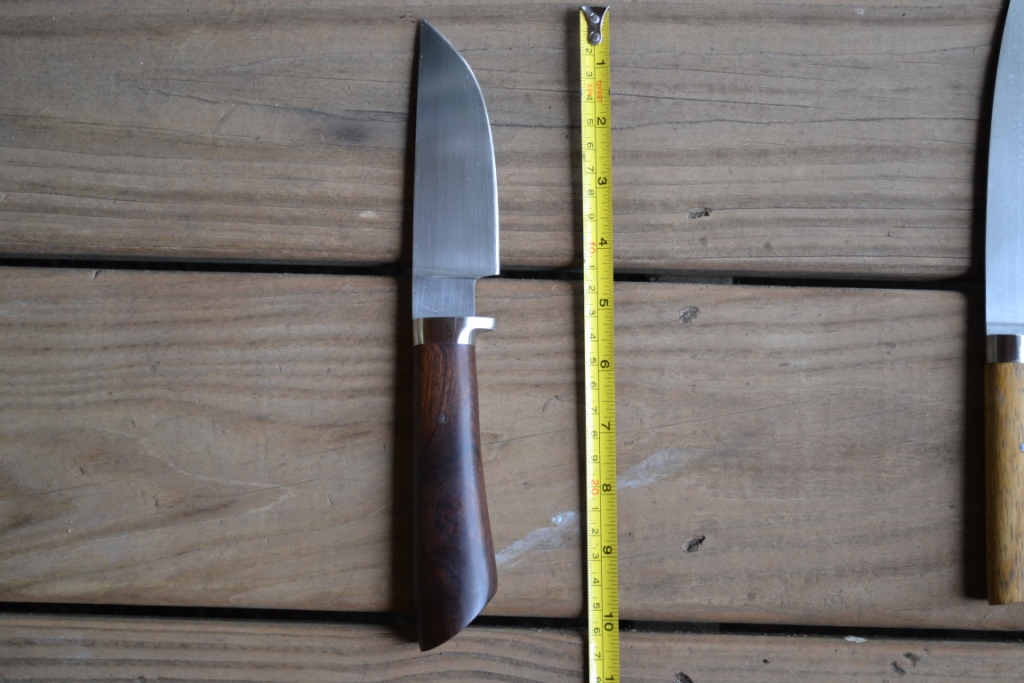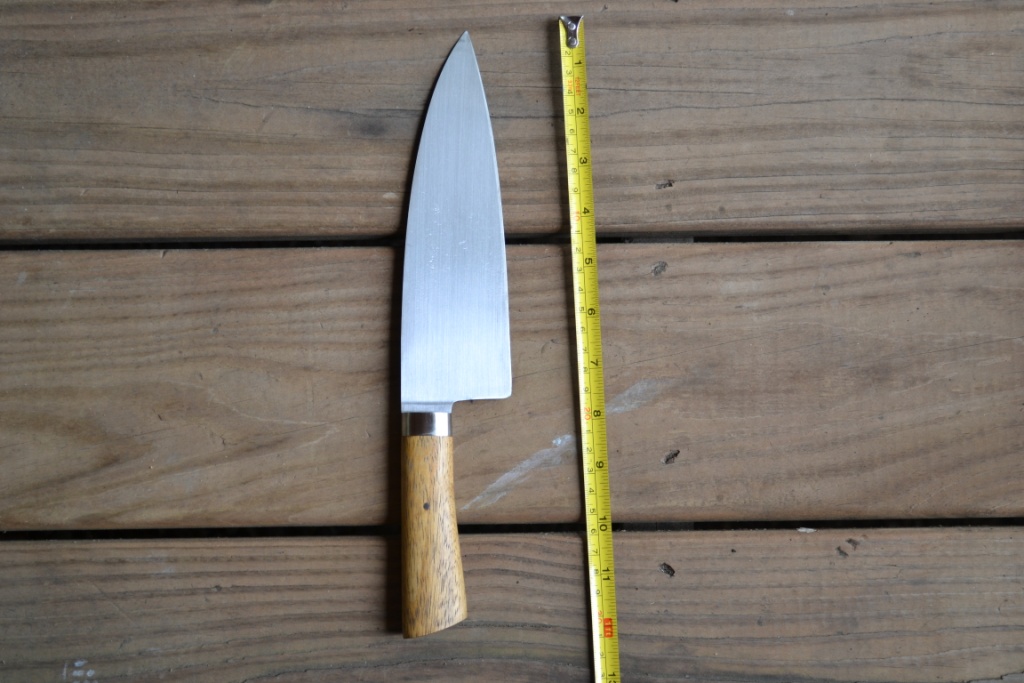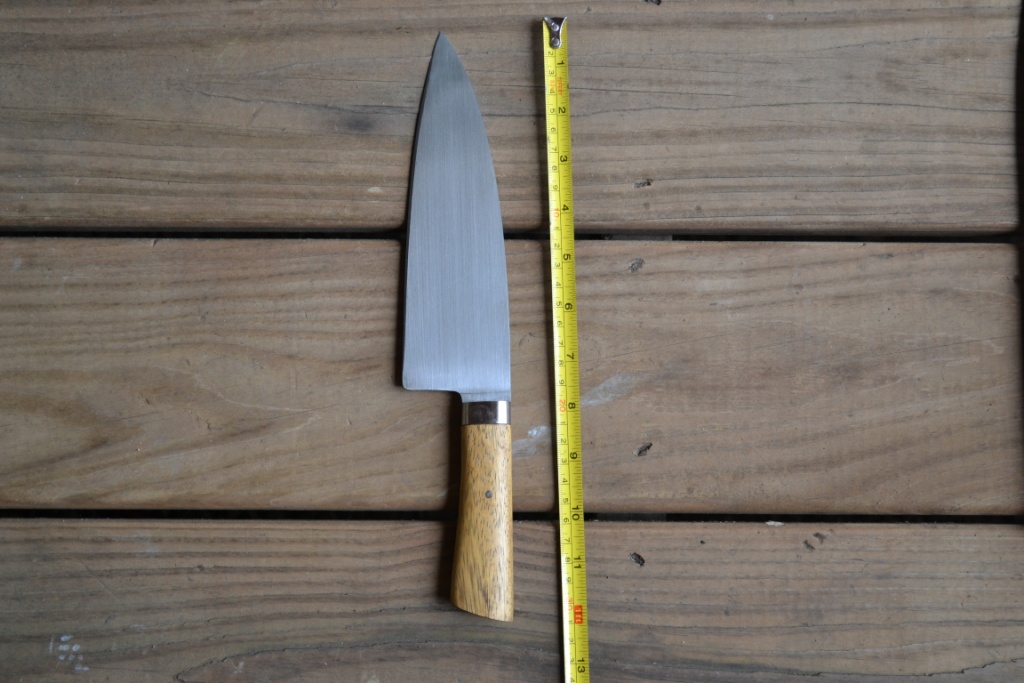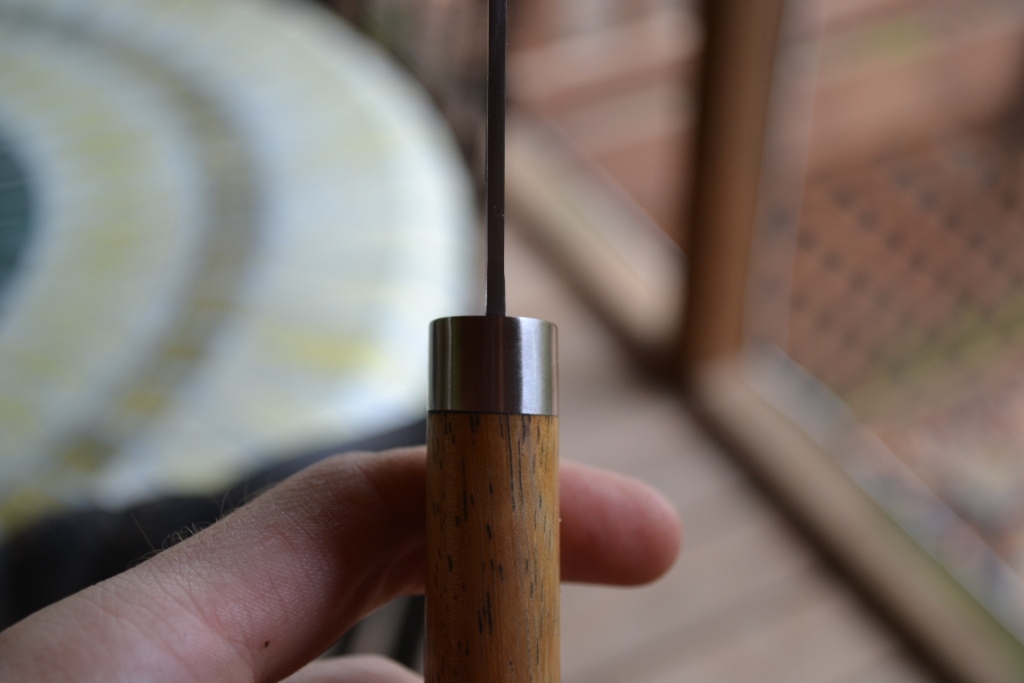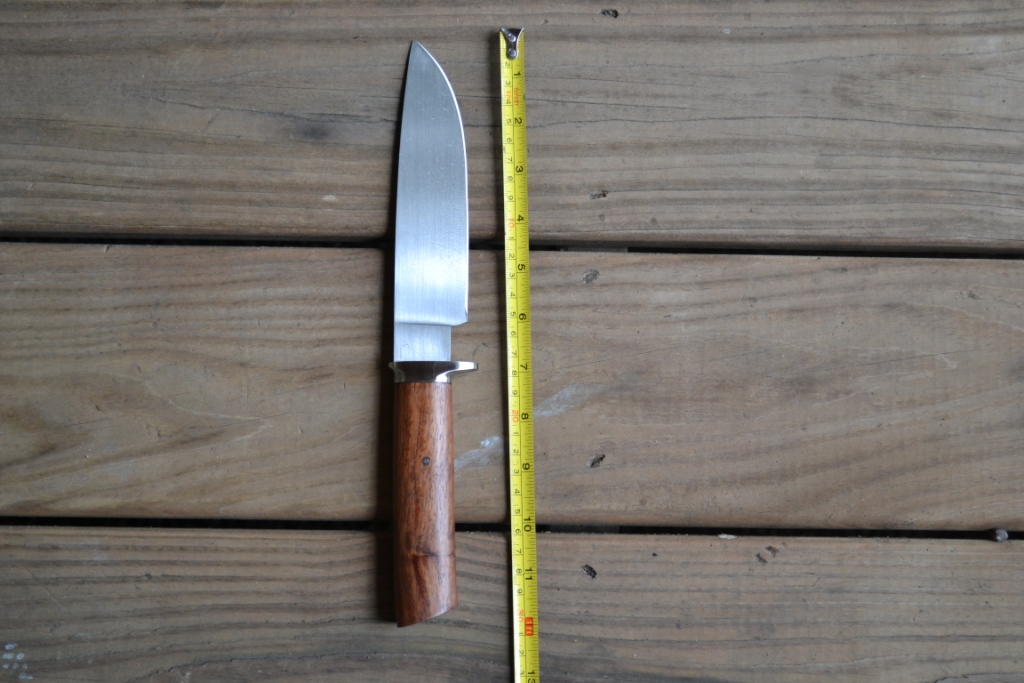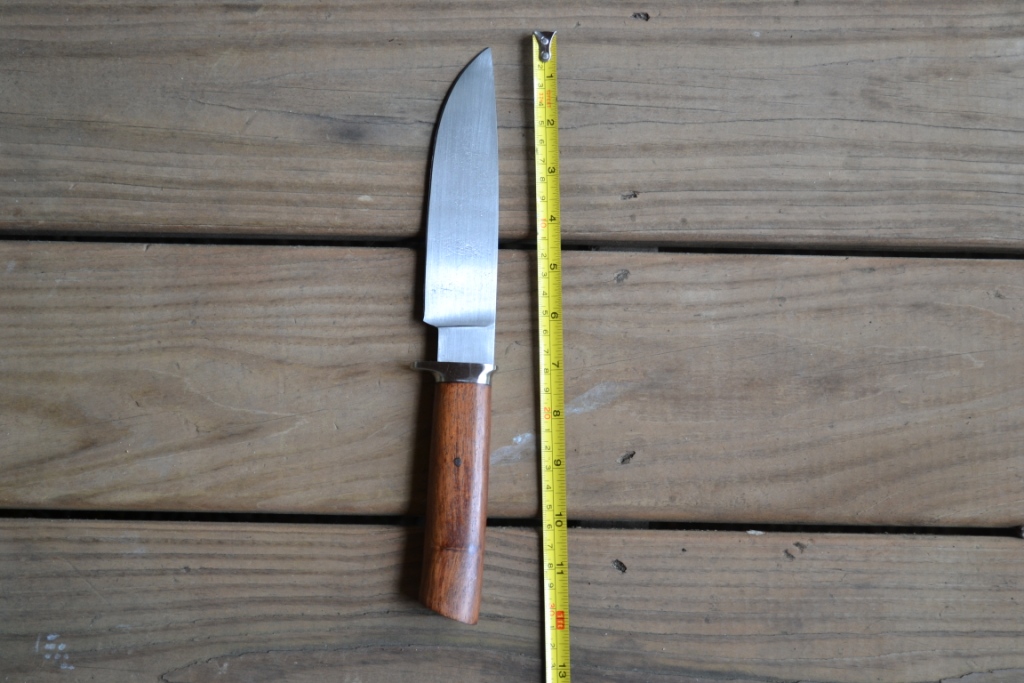Hey everybody!
I was a year past my performance pass date and only had one possibly adequate knife ready, so I decided to crank out two more. I was focusing on clean execution rather than anything really impressive. Even then, there are things I want to improve on them.
All blades are 5160, 304 stainless guards, 416 stainless pins.
4" Desert Ironwood Hunter
7.5" White Limba Chef
The bolster is frustratingly non-perpendicular, leaving an uneven gap between the handle and bolster. I plan to re-heat the bolster area to melt the epoxy and hammer it straighter.
6" Coyote Camp
The back of the plunge line (by the spine) terminates a little straighter on one side while the other is a little more swoopy. I intent to sand the swoopy side straighter.
Please let me know your thoughts!
-Ethan
Thanks for posting your knives.
As your photos are only 2 dimensional, it's difficult to reach a firm opinion of them.
That said, as I look at your last one the handle seems very round in cross-section. What is referred to as "broom-handle" design is VERY frowned upon, unless it has pure function. A working belt/hunting knife would be a bit undesirable if it twisted in the grip too easily.
Make sure you have some other makes who have already been down this path have a personal look at your knives.
This stuff ain't easy. To step up like you have shows resolve.
Karl B. Andersen
Journeyman Smith
Hey Karl! Thank you for looking! I definitely intend to bring them around to mastersmiths for review once I complete the set. Here's an end view of the handles.
My advice for anyone who intends to test, is to finish your presentation knives, giving yourself plenty of time for repairs/rebuilds, and get them to as many Mastersmiths as possible for review.
Having judged at the JS level a number of times, the one question I ask when a person fails is "How many Mastersmiths reviewed your knives prior to testing?" Historically, those who fail respond with either "None." or "One". Often sighting that there are no Mastersmiths "locally", or they were not going to make the effort to get the knives to various Mastersmiths for review.
Based strictly on the photos posted, I see some possible blade finish issues. I also agree with Karl about the "broom handle" configuration of the handles. One thing that concerns me, that I cannot see well in the photos is the use of 300 series for guard material. 300 series stainless takes significantly more time and effort to achieve an acceptable finish, all too often at the JS level, I see 300 series fittings that have "buffed over" heavy grit scratches....and although I cannot be sure, I think I see that in the third photo down.
Finally, I notice that none of the blades/knives have a makers mark on them....now that could be because it's not yet been applied, but it reminded me of an instance where I heard someone in the judging room say.... "If the person isn't proud enough to mark them, then maybe they don't believe they are worthy?"
I was focusing on clean execution rather than anything really impressive
You might not realize just how important that statement is..... The way I say it is.... Super simple, and Super clean.
Ed Caffrey, ABS MS
"The Montana Bladesmith"
www.CaffreyKnives.net
Hey Ed! Thanks for your input! My plan is to make at least five knives as possibilities and bring them to a hammer-in for review. That should give me several masters in one place to get feedback from.
I didn't know 300 series was particularly difficult to finish. I'm pretty sure the third picture is just a smudge or maybe some tung oil from the handle that needs to be wiped off, but I'll be paying extra attention.
I hadn't considered my handles as broomhandle-y until you guys brought it up. I may be overcompensating for fear of making them too narrow (a problem I've had in the past).
I appreciate everyone's feedback! Please keep it coming!
Grinding through the spine is going to get negative reviews from the panel.
Shoulders and spine must be clean.
Stay at it; if it was easy everyone would be making knives.
Mike Williams
Master Smith
Hey Mike!
Thanks for the reminder. Keeping the plunges even toward the spine is definitely something I struggle with.
Ethan, While it's good to take a finished knife to the mastersmiths to review, I think you should take a few blades to them as well. Here's why. In your photos, there are problems with the blades that may cause you to fail if were to present those knives. By showing the blades only to the mastersmiths, there would be opportunity for correction before installing the guard and handle. Now you're likely to have to make a whole new knife.
My recommendation is to get the blade right before proceeding. The fact that you see the difference between one side over the other means that you chose not to correct it before you installed the guard.
If you made the blade up to standard and install the guard crooked or fail to get a good fit behind the guard, it still most likely wont pass.
I often break the steps down like this, giving myself a grade, from 1% to 100%:
Blade = __%
Guard = __%
Handle = __%
Total = __% divided by 3 gives the score.
Needless to say, each part must have a very high percentage value. AND that value must be there BEFORE proceeding to the next part as well as the fit to the next part.
Hey Lin! Interesting ideas! I hadn't considered getting partial knives reviewed, nor giving myself a rating for each step.
I am indeed often at fault for being anxious to finish a project and telling myself I'll fix everything later. I wouldn't have to tell myself that if I would just getting everything right in the first place, before going to the next step!
I would be interested to know what approach some of the Mastersmiths used when completing their MS practical test knife as there are so many ways to approach this. Obviously I will be doing plenty of my own testing before I attempt this test.
From my limited experience I have found dry welding to be cleaner than flux and plan to use this method but would be interested in the thoughts of others?
Edge quenching from a forge versus full hardening and drawing the spine? Heating the edge only with a torch or forge? Or a fully hardened blade a bit thinner than usual with a good distal taper, if done correctly this should bend 90 degrees and flex back with no distortion?
Finish etching the Damascus test knife? I know the testing Mastersmith needs to see the layer count but I don't want to go with a deep etch and plan to finish the blade as smooth as possible to avoid stress risers?
I always like long tangs on my hidden tang knives but may plan to go with a through tang construction? If the blade was edge quenched only the the tang would be soft and may bend at the blade/guard join?
Blade profiles seem to differ with personal preference, edge geometry and sharpness I am pretty confident with.
There is a lot to consider and I will answer some of these questions myself when I start testing but very interested in the thoughts from others?
Thanks in advance!
Barry

